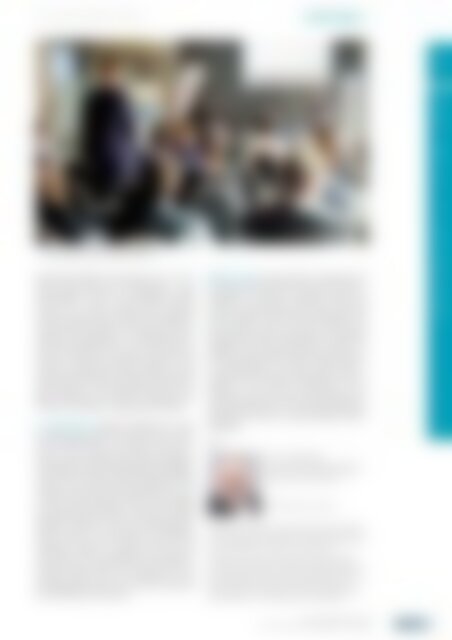atw - International Journal for Nuclear Power | 05.2022
Ever since its first issue in 1956, the atw – International Journal for Nuclear Power has been a publisher of specialist articles, background reports, interviews and news about developments and trends from all important sectors of nuclear energy, nuclear technology and the energy industry. Internationally current and competent, the professional journal atw is a valuable source of information. www.nucmag.com
Ever since its first issue in 1956, the atw – International Journal for Nuclear Power has been a publisher of specialist articles, background reports, interviews and news about developments and trends from all important sectors of nuclear energy, nuclear technology and the energy industry. Internationally current and competent, the professional journal atw is a valuable source of information.
www.nucmag.com
Erfolgreiche ePaper selbst erstellen
Machen Sie aus Ihren PDF Publikationen ein blätterbares Flipbook mit unserer einzigartigen Google optimierten e-Paper Software.
<strong>atw</strong> Vol. 67 (2022) | Ausgabe 5 ı September<br />
| Youngs Scientist‘s Workshop at KERNTECHNIK 2022.<br />
Simulating Residual Heat Removal via a Two-<br />
Phase Large Scale Loop Thermosyphon”. Loop<br />
thermosiphons (LTS) are considered suitable<br />
devices <strong>for</strong> a Passive Residual Heat Removal<br />
System. Datasets from a large-scale atmospheric<br />
LTS-experimental facility were used to assess and<br />
validate the per<strong>for</strong>mance of LTS-models developed<br />
with ATHLET-code. A total of 18 stationary<br />
states <strong>for</strong> single and two-phase operation were<br />
analyzed in detail featuring variations in heat<br />
inputs and filling ratios. A proper data agreement<br />
and prediction of loop fluctuations <strong>for</strong> the twophase<br />
operation was achieved, indicating that<br />
ATHLET is suitable <strong>for</strong> simulating LTS-facilities.<br />
R. Vennemann explained “Simulation of Pool<br />
Scrubbing Experiments Per<strong>for</strong>med in the Large-<br />
Scale SAAB Facility”. The paper deals with a<br />
review of the experimental facility including a<br />
description of a specific experiment and its simulation<br />
with the Containment Code System COCOSYS,<br />
which is part of the software package AC ² . The<br />
considered experiment investigates the retention<br />
of CsI by Pool Scrubbing. The Pool Scrubbing<br />
model SPARC-B/98 is used to calculate the aerosol<br />
depletion efficiency and the decontamination<br />
factor. Contrary to the simulation, the depletion<br />
efficiency decreases <strong>for</strong> larger aerosols in the<br />
experiment, which is explained by a coursing of<br />
the aerosols and a shift in the size distribution. It<br />
becomes obvious that the discrepancy in the<br />
decontamination factor can not only be explained<br />
by hydrodynamic parameters.<br />
Shanyao Zhang talked about a “Comparison of<br />
the Per<strong>for</strong>mance Parameters of Tools <strong>for</strong> a Decontamination<br />
of Corners”. Currently, corners are<br />
worked on with hand-held tools with a connected<br />
vacuum exhaust system <strong>for</strong> the reduction of the<br />
dust emissions, such as needle gun, milling tool<br />
and concrete grinder. These tools are not specially<br />
designed <strong>for</strong> the decontamination of corners, so<br />
that they cannot provide a good work per<strong>for</strong>mance<br />
to decontaminate the corners. Based upon a<br />
comparison of per<strong>for</strong>mance parameters and investigation<br />
of the fracture mechanisms of the<br />
currently used tools, an innovative, partially automated<br />
demonstrator <strong>for</strong> a dry-mechanical decontamination<br />
of corners in nuclear facilities will be<br />
developed.<br />
Author<br />
Prof. Dr.-Ing. Jörg Starflinger<br />
Chair of <strong>Nuclear</strong> Technology and Reactor Safety at<br />
the Institute of <strong>Nuclear</strong> Technology and Energy<br />
Systems of the University of Stuttgart<br />
joerg.starflinger@ike.uni-stuttgart.de<br />
Jörg Starflinger received his Dr.-Ing. from Ruhr University Bochum in 1997. Afterwards,<br />
he moved to FZK (now KIT) as a Post-Doc working on hydrogen safety and<br />
nuclear plant simulations. From 2006-2010, he served as coordinator a FP6 European<br />
Project (HPLWR Phase 2). In 2010, he became full professor.<br />
Being member of the Board of the German <strong>Nuclear</strong> Society he is serving as<br />
contact point <strong>for</strong> the “KTG Junge Generation” and was elected KTG Treasurer in<br />
2021. He became board member, Vice-President of the European <strong>Nuclear</strong> Education<br />
Network (ENEN aisbl.) and was elected President of ENEN in 2020. He is proactively<br />
supporting and promoting national and international activities <strong>for</strong><br />
students during their career development. Together with engaged and <strong>for</strong>wardthinking<br />
colleagues, he is co-organizing the Young Scientist Workshop.<br />
KERNTECHNIK 2022 · 21. – 22. JUNI · LEIPZIG 73<br />
Special | KERNTECHNIK 2022<br />
BEST PAPER AWARD YSW ı Conference Report ı Jörg Starflinger
















